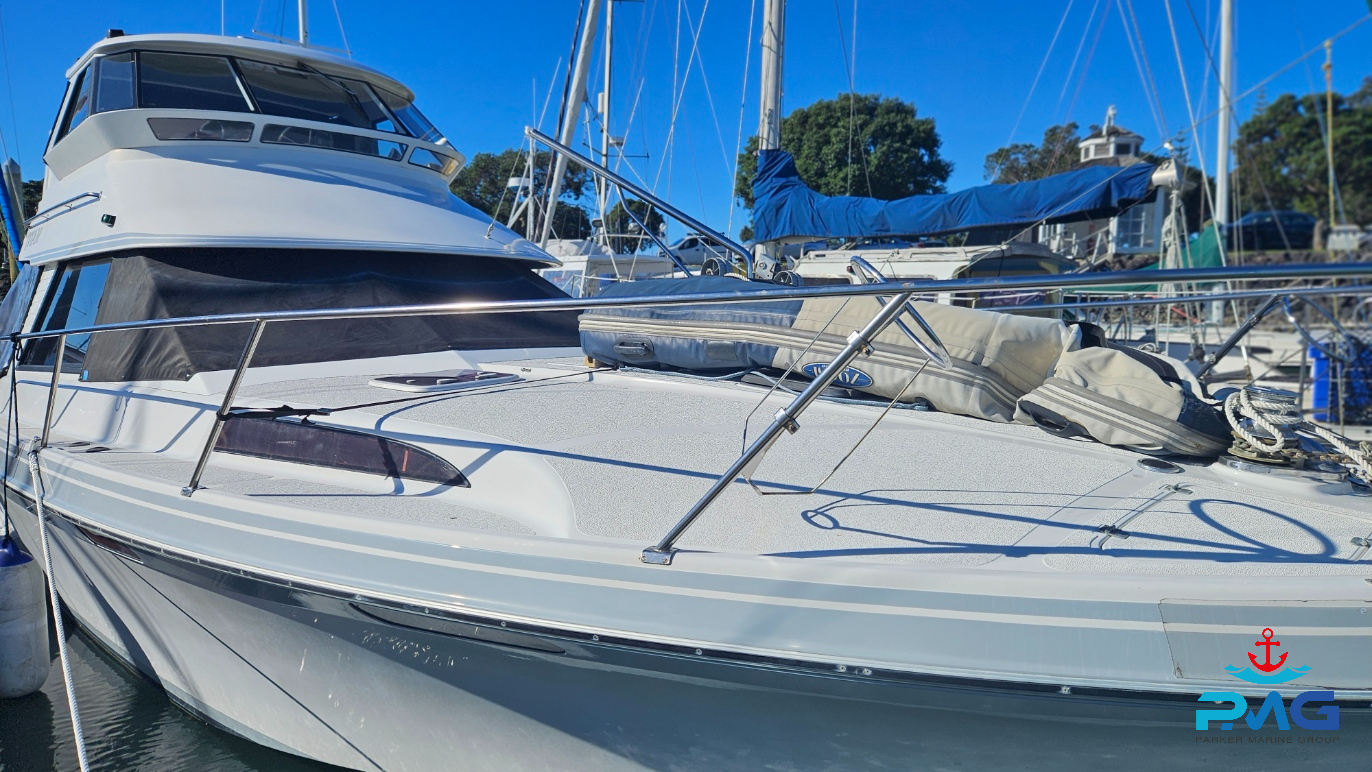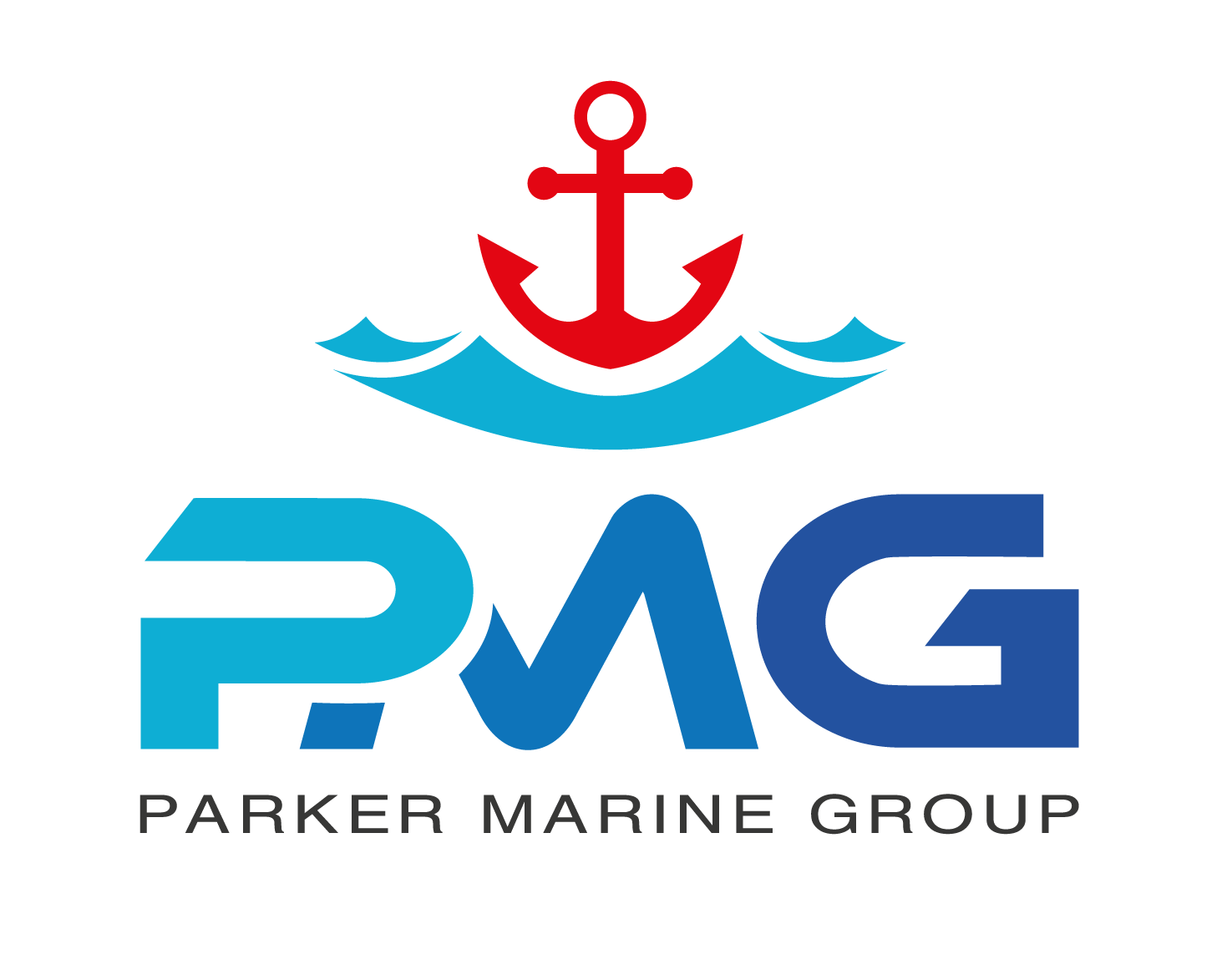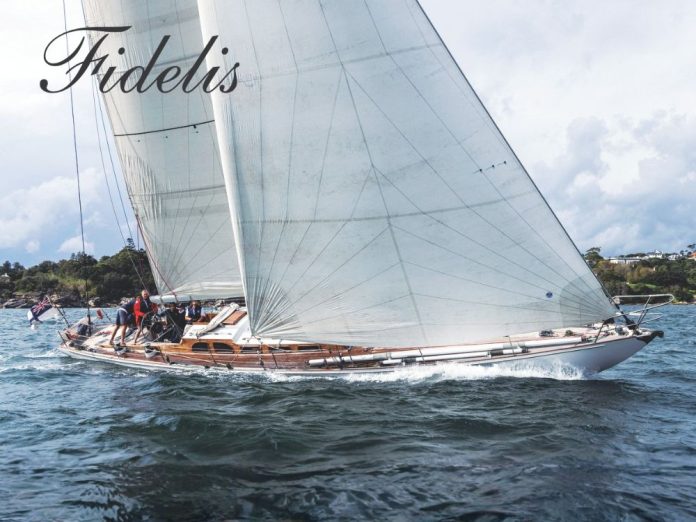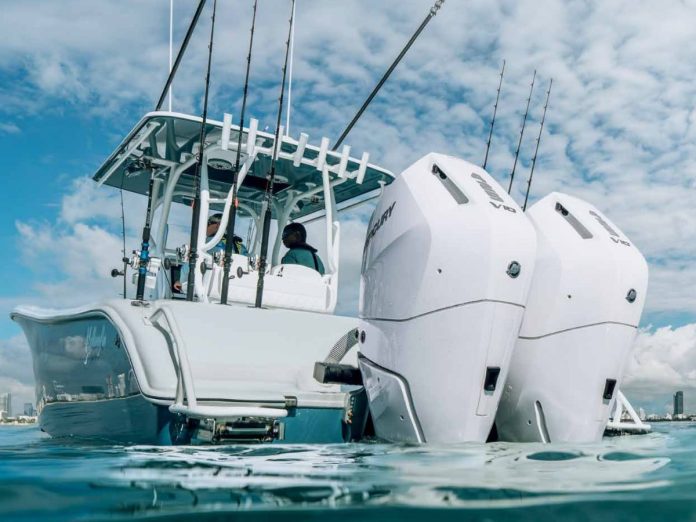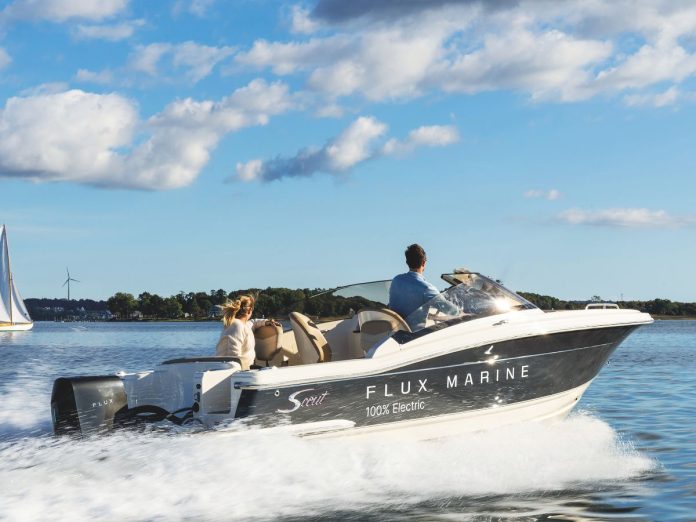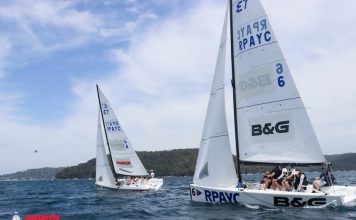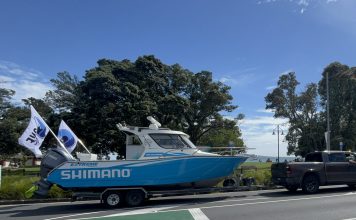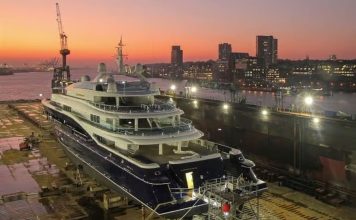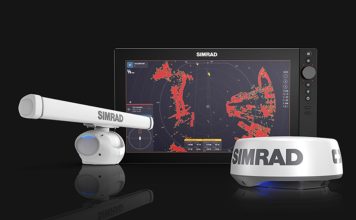No matter whether you refer to them as WaveRunners, Personal Water Craft (PWC), jet-skis or simply skis, they’re everywhere. Tom Fraser looks at the monumental changes in the hardware and the way it’s been used over the past 30 years. By Tom Fraser.
Chris Farnley remembers clearly the first time he ever rode a jet-ski back in the late 1980s. He was aged 14 and it took place on the Avon/Heathcote Estuary in Christchurch.
It’s fair to say the experience transformed him – his life has been based on or around skis ever since. He’s the country’s longest-serving retailer, having opened his first shop in the Garden City back in 1998 and now also co-owning the Yamaha dealership in Auckland. He’s witnessed monumental changes in the industry, the PWCs themselves and the people using them, and he remains as passionate today as he was back when he first started riding.
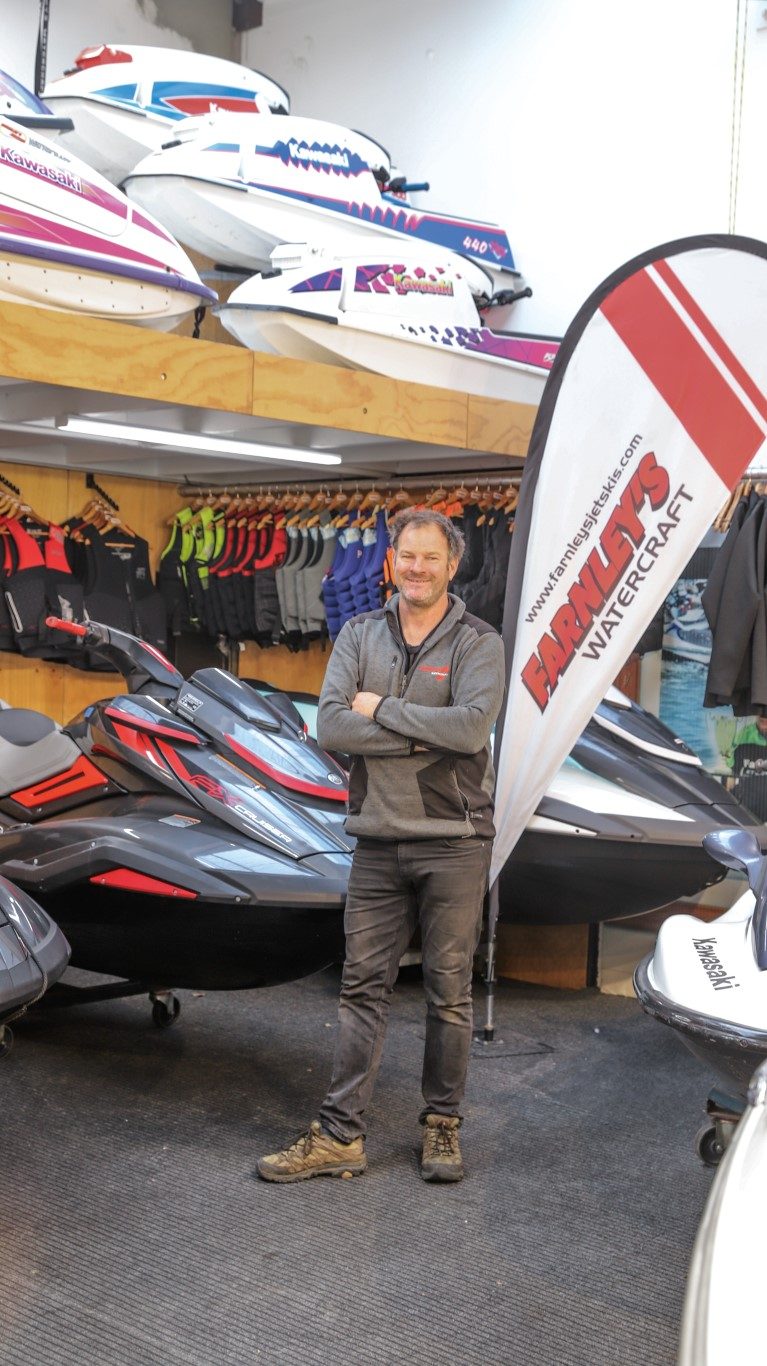
Farnley is in a prime position to talk about long-term trends and the changes in a pastime that started as a fringe watersport for a young, largely male, demographic chasing a new dose of adrenaline, but has now become a mainstream maritime juggernaut that continues to capture a decent share of the boating market.
He recalls what he considers to be several key periods of change that helped turn jet-skiing into that mainstream, middle-aged sensation. The first was about the year 2000, with a switch from selling small one-person, noisy, two-stroke stand-up pole- skis to marketing bigger, more capable machines, he says.
“All of a sudden, we had these skis that could sit two or even three people, could pull a biscuit or skier, had onboard storage and you could tow them with a small family car,” he says. “Jet-skiing became the newest, coolest thing to do and the industry was transformed.”
The next revolution was the arrival of four-stroke PWCs not long after, he says.
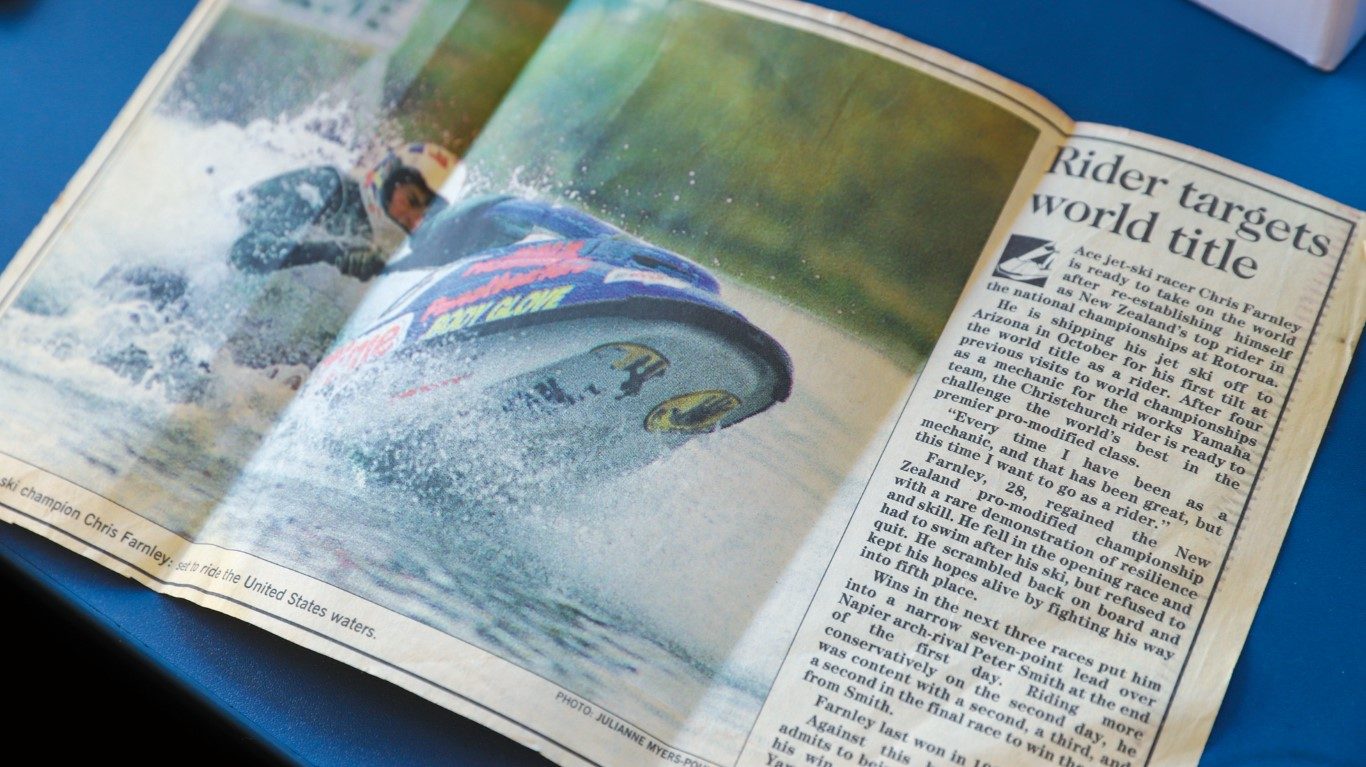
“That meant the user simply had to push a green button to start the ski and they were away. Gone were the days of priming, using a choke and mixing oil. Anyone could use a PWC. I went from having two staff to having nine staff about this time and I also started making trailers and that side of the business also boomed.”
Then, years later, came the arrival of COVID-19 which had another profound impact on the industry, he says.
“Jacinda Ardern was on the TV every day saying things like ‘wear a mask, don’t get close to people, you can’t travel’ and she might as well have had a caption reading ‘Go and buy a PWC from Chris Farnley.’ Demand then – and since – has been immense. For example, in December last year – with just 22 working days – we sold 47 PWCs. It was insane.”
But the popularity and growth of jet-skiing in New Zealand was on the increase even before COVID. While the 2020 Maritime NZ Recreational Boating Survey shows 45% of adult New Zealanders are involved in recreational boating in some way, it’s unknown how many PWCs and their riders are taking part in the sport. But you just have to venture to your nearest boat ramp on any weekend over summer to see just how popular they are. Even Police, Harbourmasters, lifeguards and other agencies now use PWCs as part of their monitoring, safety and enforcement fleets.
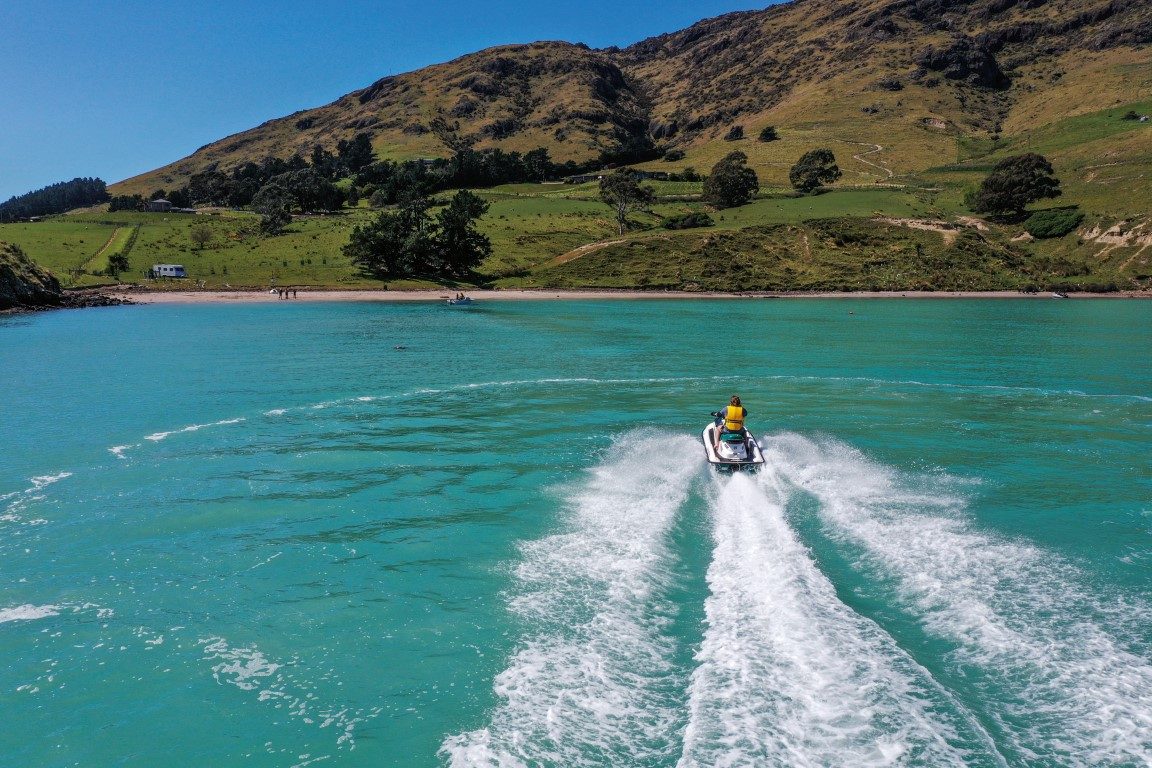
But while sales have increased, there’s no single demographic purchasing these machines, says Pete Dick, Yamaha Marine’s Marketing Manager.
“We’re seeing all sorts of people, from young tradies and professionals in their early twenties who love their boating and outdoor sports and are looking to, perhaps, get into more fishing or to explore and have some fun towing friends on a wakeboard. We’ve also had lots of couples looking to start their marine career but probably not yet ready to pull the trigger on buying a boat. Interestingly, we get families buying and they often see a PWC as a great alternative to a boat.
“Furthermore, there’s no question that the COVID period got people thinking about – and subsequently buying – PWCs. Demand just went through the roof.”
Farnley also believes COVID helped transition jet-skiing from being perceived by many as a selfish activity to one that could be enjoyed by the entire family. He also says the number of women – young and old – buying PWCs has also ‘gone through the roof’.
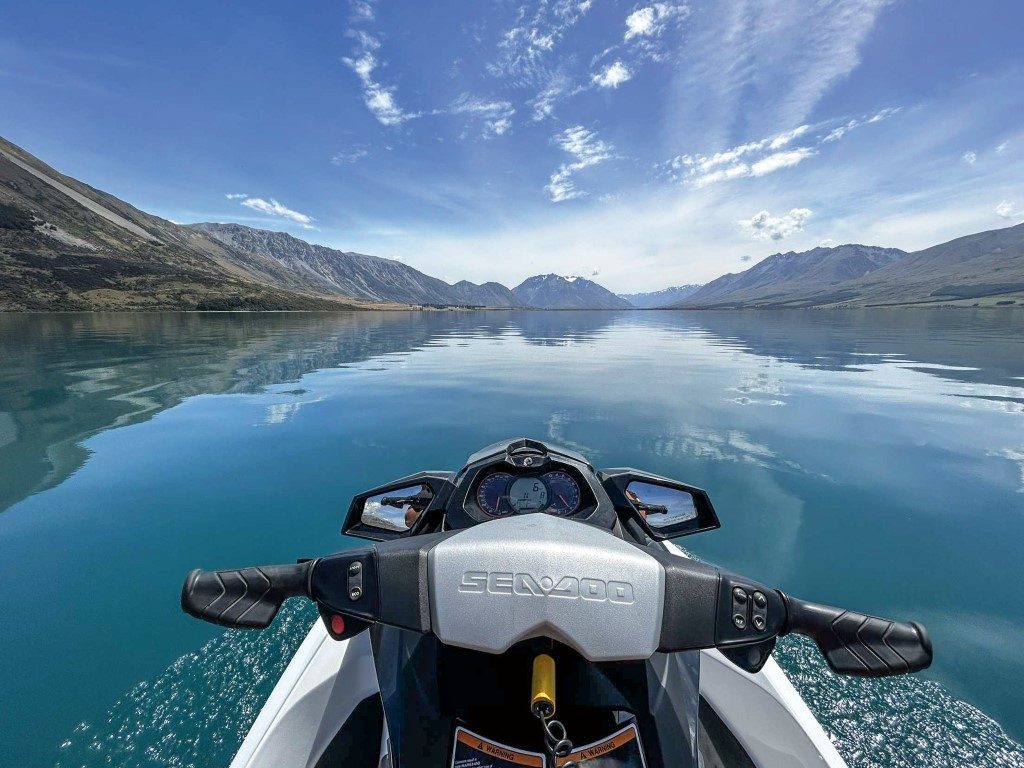
The growing diversity of ownership could be due to changing consumer demand and how well manufacturers have responded by developing models for particular needs and wants. For example, Yamaha’s EX and Jetblaster, and Seadoo’s Spark models have opened the door to simple-to-use, fun PWCs offered to consumers at often aggressive prices. Equally, PWCs developed and equipped with features aimed at the watersports and fishing markets are also very popular.
Andrew Hill can attest to that: the Aucklander is one of very few Bombardier Recreational Products (BRP) Seadoo Ambassadors across the globe and one of the leading figures in Seadoo’s research and development programme which developed a fishing-specific PWC, the Fish Pro. Seadoo saw the growing popularity of fishing from a ski and pursued it, he says.
“Fishing from the ski is exciting and addictive and then, of course, there are all the attributes that help the sport and PWCs to sell themselves – they are fast and affordable, easy to tow and to store. A PWC ticks a lot of boxes for a lot of people.”
Hill also highlights another key factor of increased interest in PWCs – social media.
“A lot of people are living what they see on social media; they might see someone fishing in a special spot or just out exploring and having fun on a ski and it gets their mind ticking.”
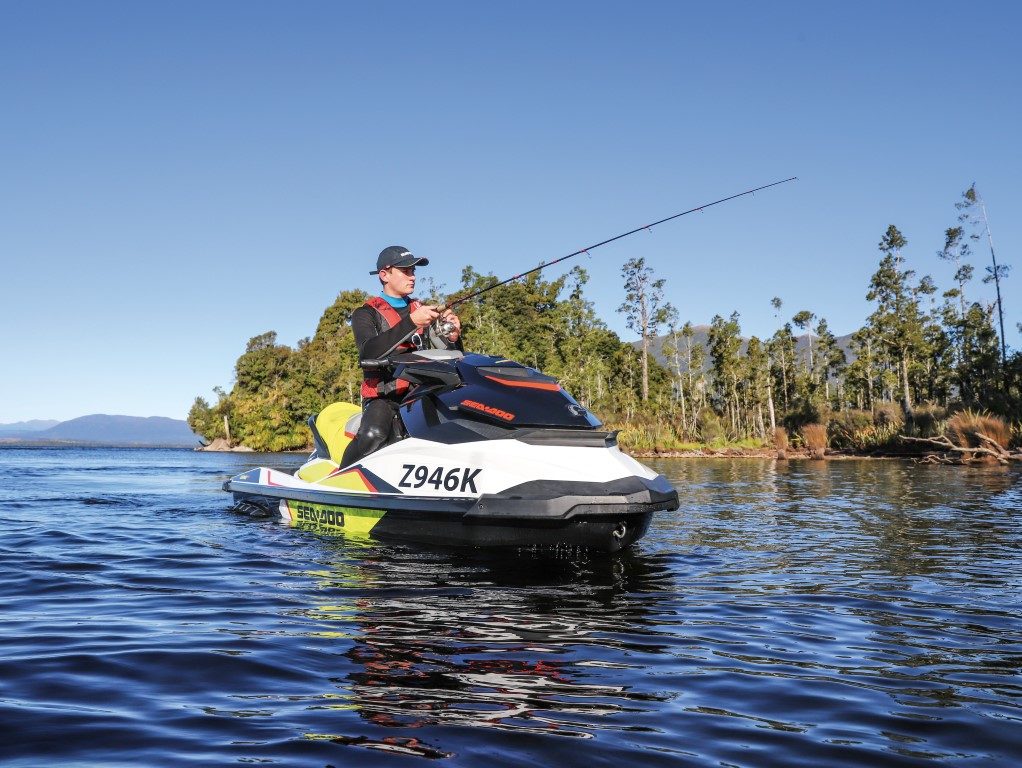
A quick search through popular social media apps, including YouTube, TikTok, Instagram and Facebook, reveals multiple channels, posts, pictures and videos dedicated to the sport. Hill knows only too well the power and influence of social media and has used various channels over the last 15 years or so as part of developing and building his business, which is dedicated to PWC-based fishing.
“Without sounding silly, if it wasn’t for social media I probably wouldn’t have been found by Seadoo. They were able to see quickly and easily how rapidly the sport was exploding on our side of the world,” he says.
Hill believes ownership will continue to grow as PWCs continue to evolve.
“Skiers are passionate. My customer base has become quite active in the ski community – they come on social rides and trips away to different and new locations. They get more experience and confidence and that means they’ll fish year-round rather than just over the summer months. They’re prepared with the right equipment, correct clothing and safety gear, and they’ll do a lot more engine hours. Many guys would do between 50-80 hours a year on a PWC whereas in the past they might only be doing 10 hours in their boat.”
But, more PWCs mean more people on the water and, with it, increased risk of mishaps.
Lake Taupo Harbourmaster Jamie Grant says on a typical summer patrol around the lake he’d see more than 50 PWCs on the water and the number-one piece of safety advice he offers users is to learn the basic rules of the water.
“Jet-ski users need to know the most basic rules; like five knots within 200m of shore and, if you’re travelling over five knots, you can’t be within 50m of another vessel. Often, you’ll get mates with a ski each blasting around and getting too close to each other or other boaties and water users.”
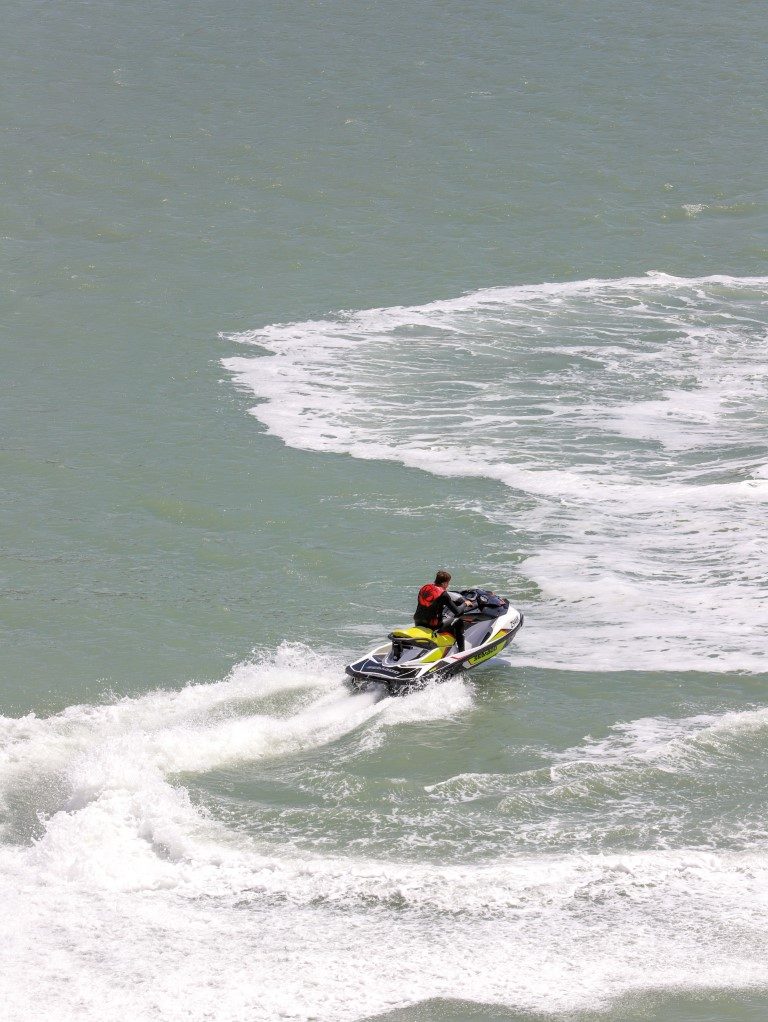
He says jet-skiers are often new to the water and have little or no boating experience or knowledge.
“Far too often we hear the comment, ‘Oh, I just bought it, I didn’t know’. We don’t try to infringe people, we try to educate them, but most infringements do get issued to jet-skiers because they go over the threshold and they put themselves and others in harm’s way.”
Every summer there are media and emergency service reports of PWC accidents, injuries and even deaths. In early 2006, in a particularly tragic case, a woman died after she suddenly turned her jet-ski in front of her husband’s ski on lake Ruataniwha, near Twizel. They collided, and she was struck by his machine.
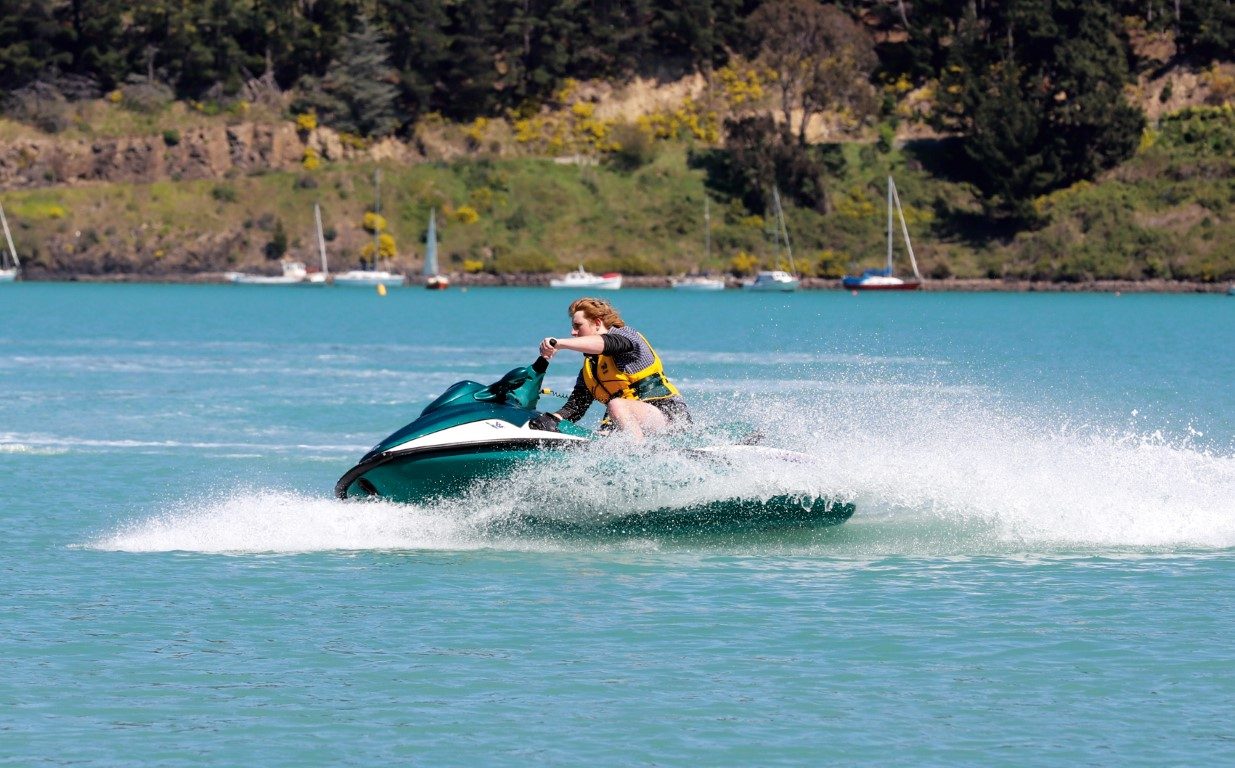
“I encourage all jet-skiers to do a Coastguard Day Skipper course, read up on local bylaws and carry communication,” Grant says.
“A large percentage of times that jet-skiers gets stuck or are reported overdue, they’re found to have no communication.”
Most PWCs don’t come with a fixed VHF but have waterproof compartments for a phone or handheld VHF. Meanwhile, waterproof chest harnesses can be purchased to hold a VHF so that if the rider falls off and needs assistance it’s on-hand rather than sitting redundant in the PWC’s compartment. Similarly, many jet-skiers are oblivious to the fact the PWC need to be clearly marked with a vessel name or registration number, he says. In some regions registration is mandatory.
Why a PWC? One family’s journey
Cantabrian Jeremy Greenwood and his family are one ‘typical’ family who’ve taken up jet-skiing in recent years. Like many people across the country, they spent years pondering boat ownership.
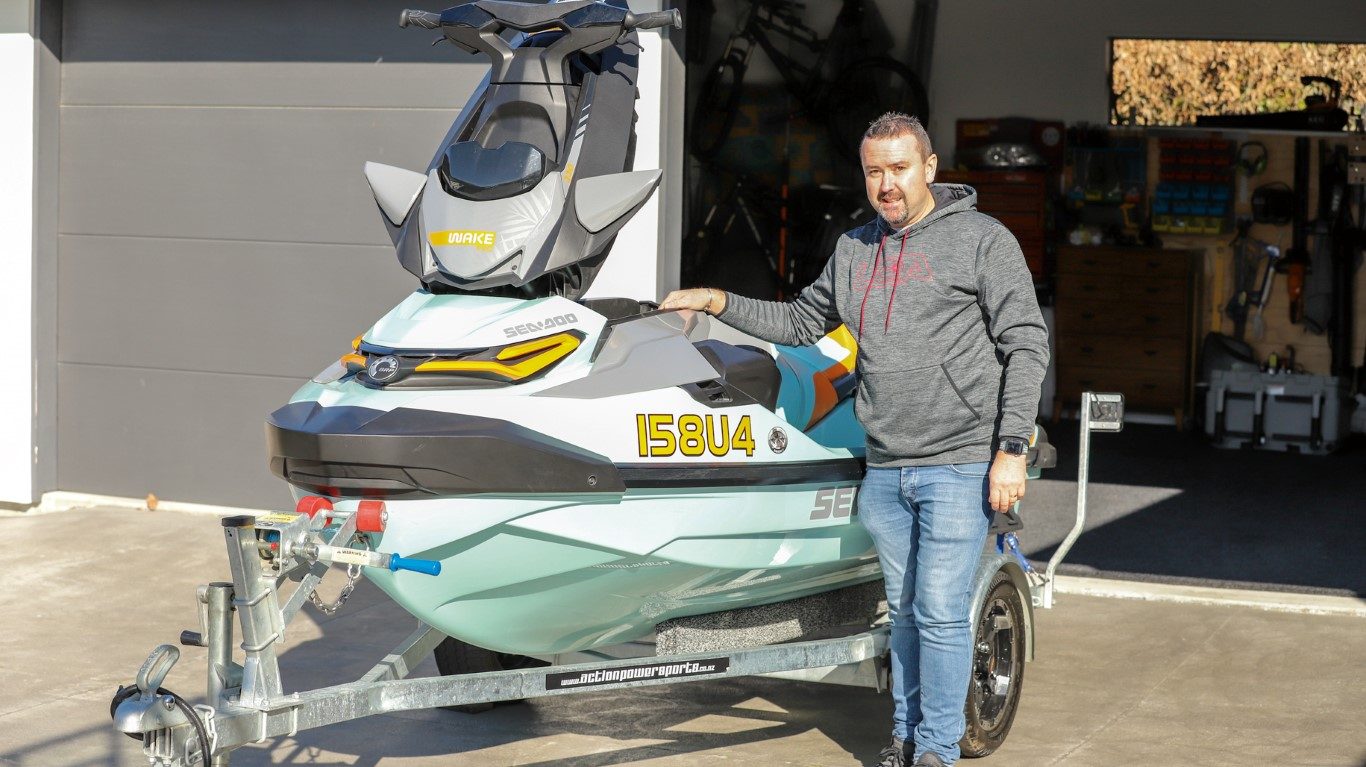
“We’d always spend a lot of time near water and had always thought about getting a vessel of some description,” Jeremy recalls.
“But, we really weren’t sure how much we’d use it or if we’d even like it. Eventually, six years ago, we thought we’d bite the bullet, buy a basic ski and see how it went.”
So, why purchase a PWC rather than a boat?
“For a start, price. We could spend 10k on a PWC or 30k on a boat and, because we weren’t sure how much we’d use it, we figured it was a good option. Plus, it could sit in the garage and take up very little room.”
After three years of solid use, it was clear that Jeremy, his wife Carol, and son Luke had clearly caught the ‘bug’.
“We were using it in the lakes, in the sea and for everything from fishing to watersports – everyone in the family was happily and confidently using it. Having a PWC was getting us out of the house and spending great time together as a family.”
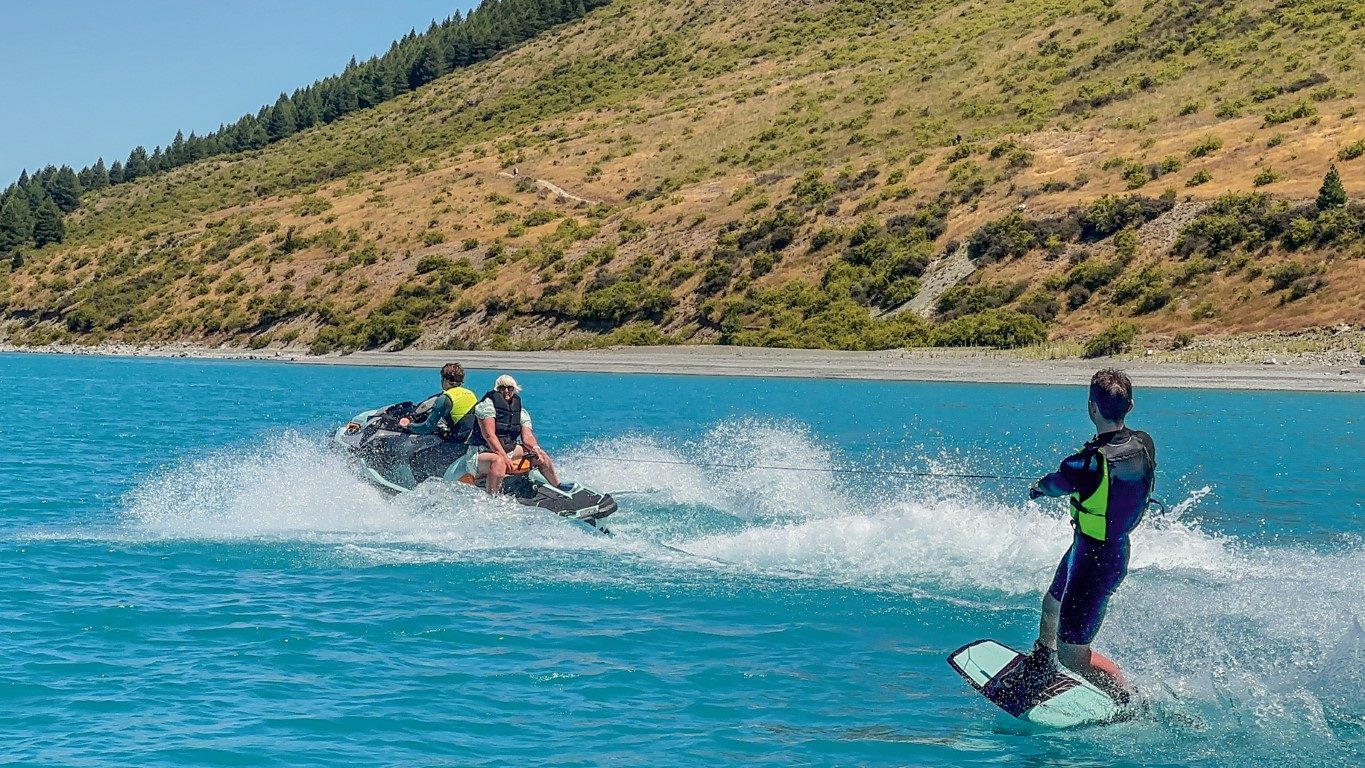
Two years ago, the Greenwood’s traded that PWC for a brand-new Seadoo WakePro 230 which, according to Jeremy, “is basically a boat”.
“It can comfortably seat the three of us, is damn comfortable and capable and can transport everything we need for a day on the water. We can attach a chillybin, load beach chairs and BBQ and it’s purpose-built for Luke to really enjoy his wakeboarding. The technology on the ski is incredible.”
The Greenwoods use it regularly on Lake Tekapo, as well as on both fresh and saltwater locations closer to their home in Lincoln, near Christchurch. Jeremy’s also skied with a group from Lyttelton to Akaroa, as well as from Lyttelton to Kaiapoi via the Waimakariri River mouth.
“Would we buy a boat? No,” he says emphatically.
“The PWC is just so easy – easy to store, easy to transport and easy to wash down. And, it does everything we need.”










